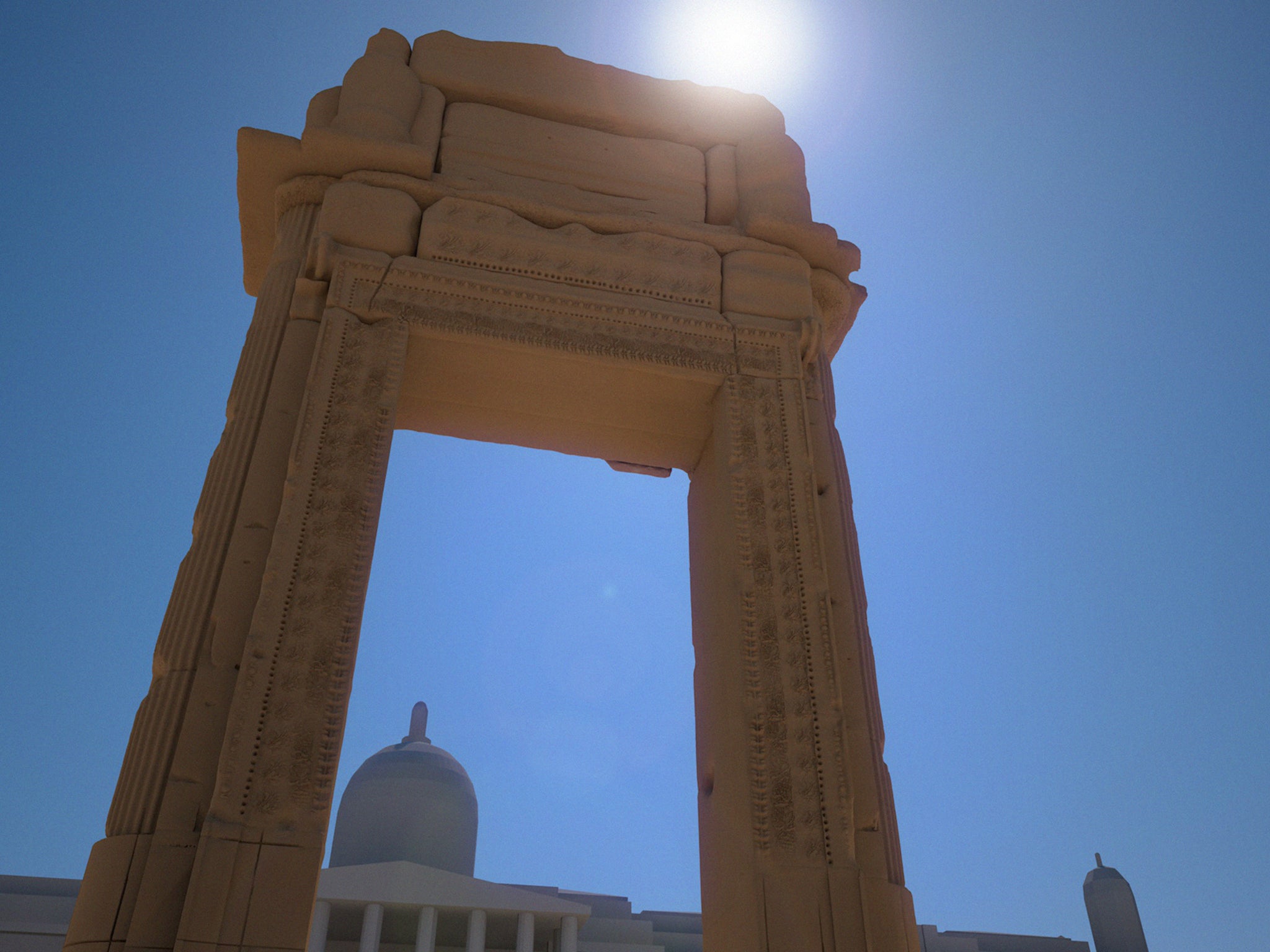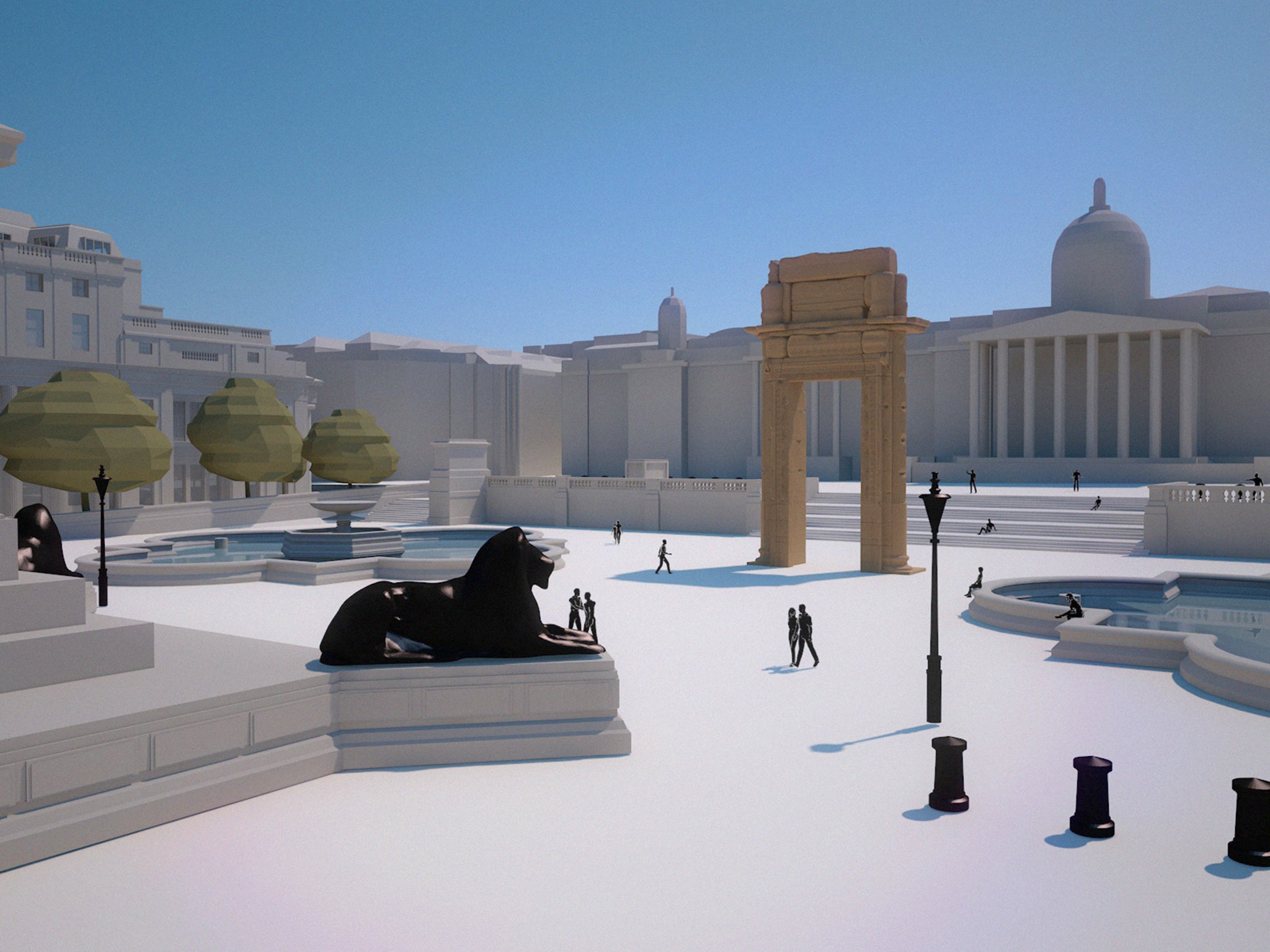Replica of Syrian arch of Palmyra that survived Isis attack to be erected in Trafalgar Square and New York
Institute of Digital Archaeology (IDA) will recreate the arch in London and New York using the world's largest 3D printer

Your support helps us to tell the story
From reproductive rights to climate change to Big Tech, The Independent is on the ground when the story is developing. Whether it's investigating the financials of Elon Musk's pro-Trump PAC or producing our latest documentary, 'The A Word', which shines a light on the American women fighting for reproductive rights, we know how important it is to parse out the facts from the messaging.
At such a critical moment in US history, we need reporters on the ground. Your donation allows us to keep sending journalists to speak to both sides of the story.
The Independent is trusted by Americans across the entire political spectrum. And unlike many other quality news outlets, we choose not to lock Americans out of our reporting and analysis with paywalls. We believe quality journalism should be available to everyone, paid for by those who can afford it.
Your support makes all the difference.Replicas of the 2,000-year-old Syrian arch of Palmyra, which survived blasts by Isis, will be erected in London and New York, using the world's biggest 3D printer.
The monument was attacked by Islamist fighters and was largely reduced to rubble. One of the 15 metre high arches, which stood at the temple’s entrance, survived.
The construction of the temple entrance has been proposed by the Institute for Digital Archaeology (IDA), who will use the world’s largest 3D printer for the project.
"The aim of our proposed installation is to draw attention to the global crisis surrounding the looting and despoliation of cultural heritage objects and architecture and the importance of celebrating the beauty and significance of these objects to the everyday lives of modern people." Dr Alexy Karenowska, Director of Technology at the Institute for Digital Archaeology, told The Independent.

The temple was dedicated to the Mesoptamian god Bel in AD32 and was the centre of religious life in the area. It was converted into a Christian church during the Byzantine era and then later into a mosque.
The full-size replicas will be the centrepiece for world heritage week in April and is reportedly being built as a symbol of defiance against Isis’s attempts to erase several aspects of Middle Eastern history.
The arch in Trafalgar Square will be made of a lightweight composite and stone powder.
The printer will work from a 3D image generated from dozens of two dimensional photographs and tourist pictures taken before the temple was blown up with barrels of high-explosive. Khaled al-Asaad, 82, the archaeologist who managed the site for 40 years, was beheaded by Isis in Palmyra’s amphitheatre.
Join our commenting forum
Join thought-provoking conversations, follow other Independent readers and see their replies
Comments